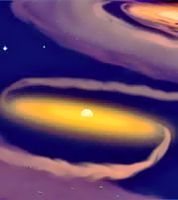Difference between revisions of "Accretion"
From Nordan Symposia
Jump to navigationJump to search (Created page with 'File:lighterstill.jpgright|frame ==Etymology== Latin accretion-, accretio, from accrescere *Date: [http://www.wikipedia/org/wiki/17th_Century...') |
m (Text replacement - "http://" to "https://") |
||
| Line 3: | Line 3: | ||
==Etymology== | ==Etymology== | ||
[[Latin]] accretion-, accretio, from accrescere | [[Latin]] accretion-, accretio, from accrescere | ||
| − | *Date: [ | + | *Date: [https://www.wikipedia/org/wiki/17th_Century 1615] |
==Definitions== | ==Definitions== | ||
*1 : the process of growth or enlargement by a gradual buildup: as a : increase by external addition or accumulation (as by adhesion of external parts or particles) b : the increase of land by the action of natural forces | *1 : the process of growth or enlargement by a gradual buildup: as a : increase by external addition or accumulation (as by adhesion of external parts or particles) b : the increase of land by the action of natural forces | ||
*2 : a product of accretion; especially : an extraneous addition <accretions of grime> | *2 : a product of accretion; especially : an extraneous addition <accretions of grime> | ||
==Description (Physics)== | ==Description (Physics)== | ||
| − | An '''accretion disc''' is a [[structure]] (often a circumstellar disk) formed by [[diffuse]] [[material]] in orbital [[motion]] around a central [[body]]. The central body is typically a young [[star]], a [ | + | An '''accretion disc''' is a [[structure]] (often a circumstellar disk) formed by [[diffuse]] [[material]] in orbital [[motion]] around a central [[body]]. The central body is typically a young [[star]], a [https://en.wikipedia.org/wiki/Protostar protostar], a [https://en.wikipedia.org/wiki/White_dwarf white dwarf], a [https://en.wikipedia.org/wiki/Neutron_star neutron star], or a [https://en.wikipedia.org/wiki/Black_hole black hole]. [[Gravity]] causes material in the disc to spiral inward towards the central body. Gravitational [[forces]] compress the material causing the emission of [https://www.wikipedia.org/wiki/Electromagnetic_Radiation electromagnetic radiation]. The [[frequency]] range of that radiation depends on the central object. Accretion discs of young stars and protostars radiate in the infrared; those around neutron stars and black holes in the x-ray part of the [[spectrum]].[https://en.wikipedia.org/wiki/Accretion_disk] |
[[Category: Physics]] | [[Category: Physics]] | ||
[[Category: General Reference]] | [[Category: General Reference]] | ||
Latest revision as of 23:38, 12 December 2020
Etymology
Latin accretion-, accretio, from accrescere
- Date: 1615
Definitions
- 1 : the process of growth or enlargement by a gradual buildup: as a : increase by external addition or accumulation (as by adhesion of external parts or particles) b : the increase of land by the action of natural forces
- 2 : a product of accretion; especially : an extraneous addition <accretions of grime>
Description (Physics)
An accretion disc is a structure (often a circumstellar disk) formed by diffuse material in orbital motion around a central body. The central body is typically a young star, a protostar, a white dwarf, a neutron star, or a black hole. Gravity causes material in the disc to spiral inward towards the central body. Gravitational forces compress the material causing the emission of electromagnetic radiation. The frequency range of that radiation depends on the central object. Accretion discs of young stars and protostars radiate in the infrared; those around neutron stars and black holes in the x-ray part of the spectrum.[1]
